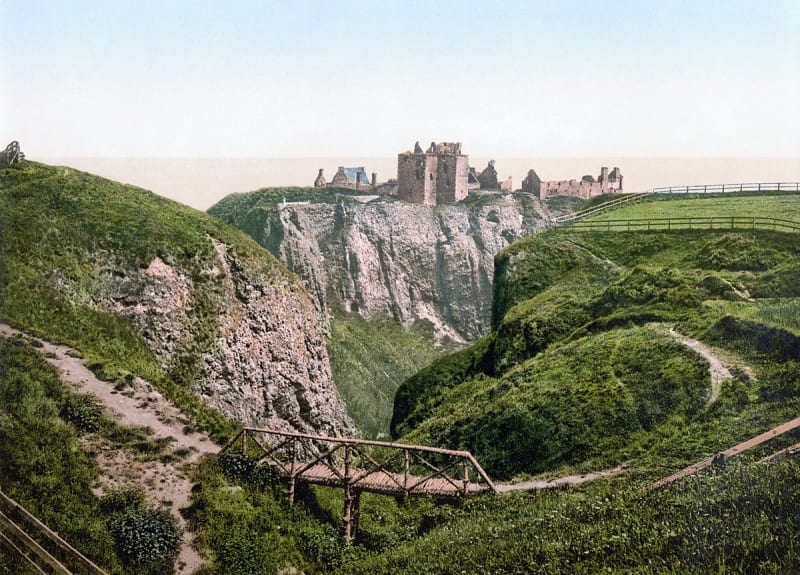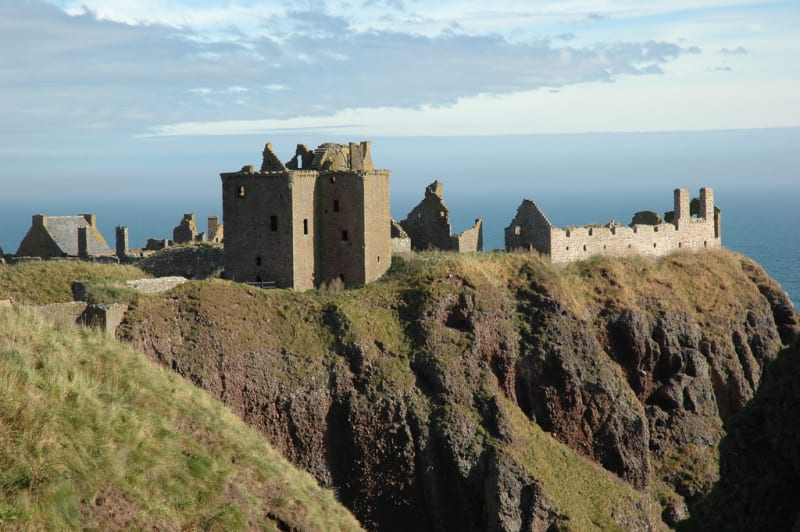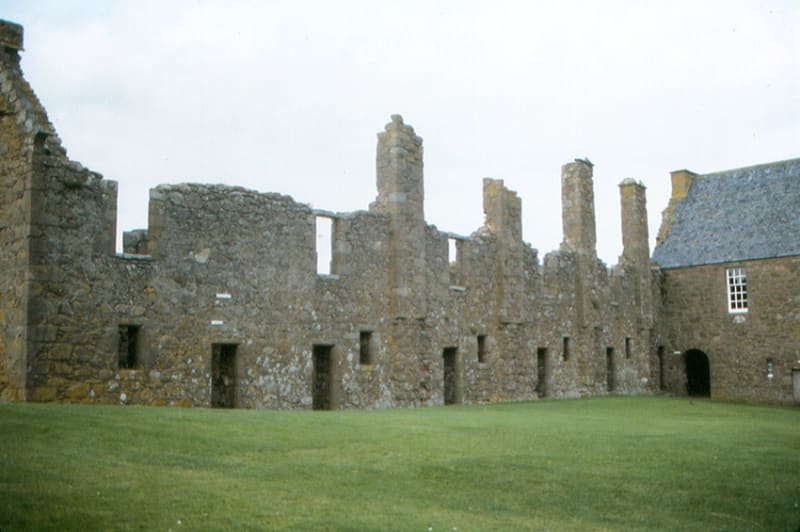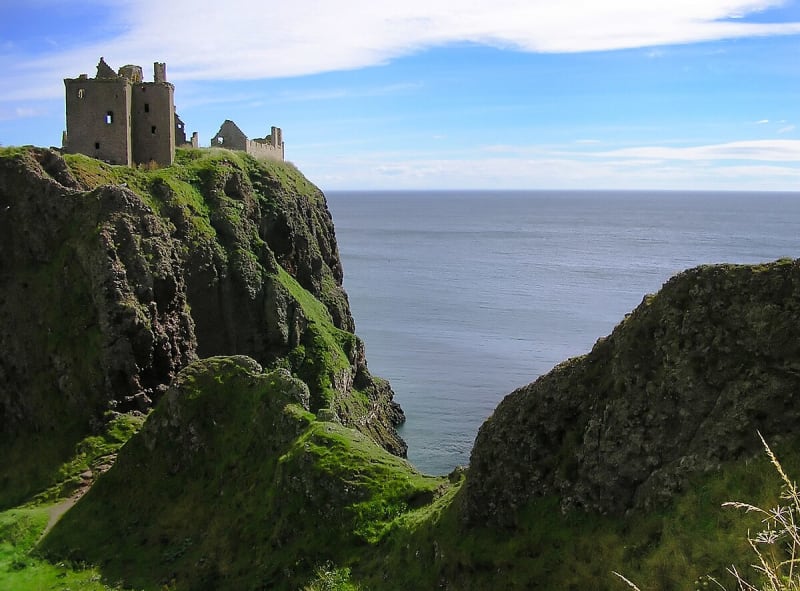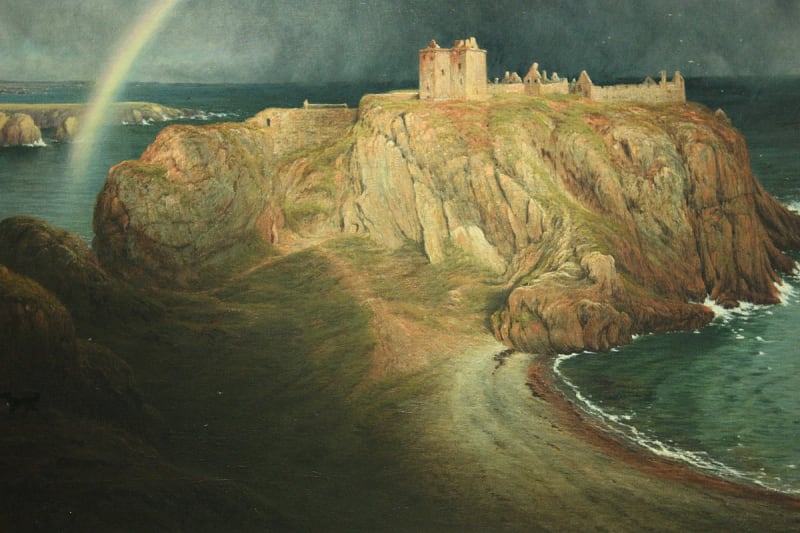Dunnottar Castle
Dunnottar Castle in Scottish Gaelic, Dun Fhoithear, means "fort on a descending slope." He played a central role in turning points in Scottish history. Dunnottar combines attractive appearance and historical significance, the attraction often impresses the imagination of visitors going on vacation abroad. The building is located about 20 kilometers south of Aberdeen, on the Scottish coast, near the town of Stonehaven.
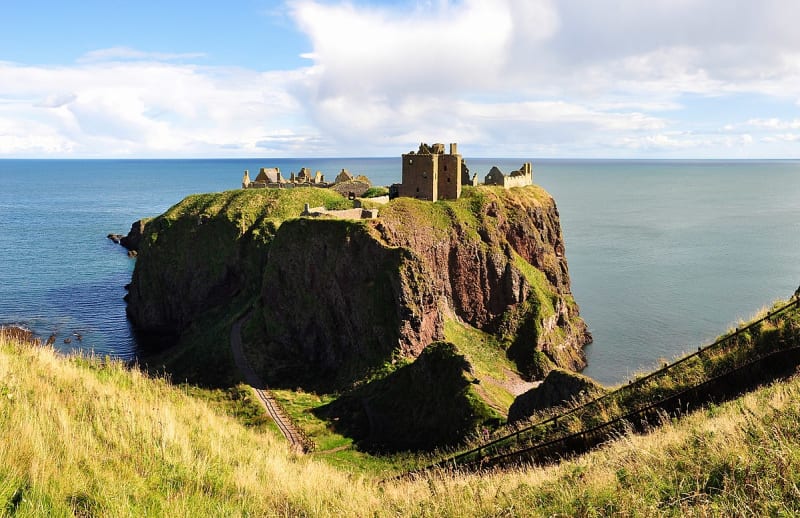
Natural protection
Dunnottar Castle is located on a cliff ledge above the Stonehaven coastline. The island consists of red sandstone, it is surrounded by the choppy North Sea, and was once connected to the mainland by a natural road - Fiddlehead. However, in order to protect the medieval castle from attack, the natural path through Fiddlehead was deliberately blocked. Instead, a new access road was cut through the rocks. This deep, narrow entrance was designed to be a safe haven for any potential intruders. This is because of its winding path, blind corners, and a 26-foot tunnel with an arrow loop that would allow archers to defend the area.
For Scottish independence
Dunnottar Castle has played an important role in many important moments in Scottish history. The formidable Edward I, King of England from 1272 to 1307, is widely known by the nickname "The Hammer of the Scots." After the successful conquest of Wales, Edward decided to take over Scotland and consolidate his power in the British Isles. In 1297, William Wallace led the Scottish rebellion against the English invasion and laid siege to Dunnottar Castle, which is currently held by English troops.
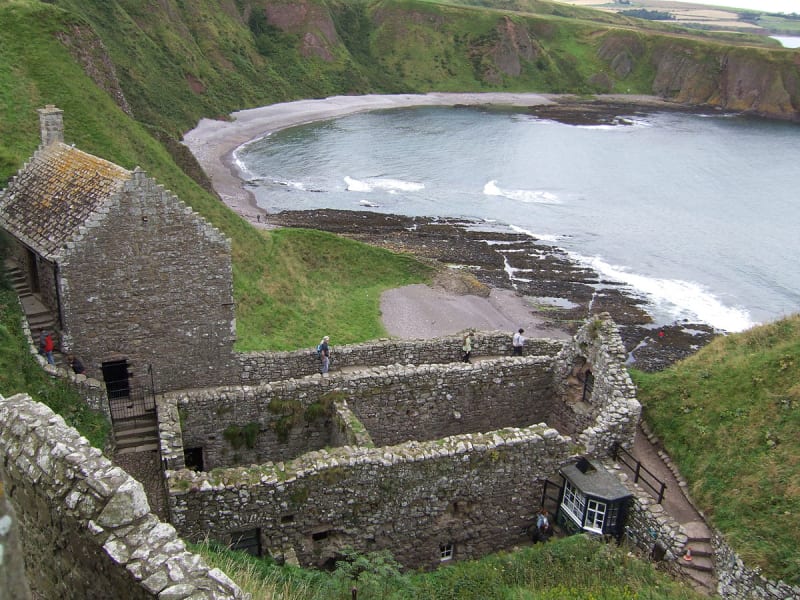
Terrified by the advance of Wallace's troops, about 4,000 British soldiers took refuge in a stone chapel inside Dunnottar Castle, naively believing that hiding in a church would save them from death. Wallace's army looted the castle and set fire to the church, burning alive those who were inside. Some, of course, managed to escape, but their only way out was to jump off steep cliffs into the raging sea.
Currently, Dunnottar Castle is almost completely destroyed. It was heavily damaged during the bombing of Oliver Cromwell, and it was not until 1925 that work began on its preservation. One of the most interesting ruins is the Tower House, literally a small castle inside a large castle, which allows you to see what the building looked like in the Middle Ages.
